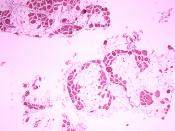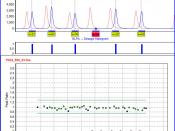Muscular Dystrophy, crippling disease characterized by gradual wasting of skeletal muscle. The clinical course is progressive, with increased weakness and diminution in muscle mass and function until the patient is confined to a wheelchair; remissions do not occur. Four clinical forms of the disease are recognized, based on pattern of inheritance, age when symptoms are first noted, and distribution of the muscles earliest involved. Microscopic abnormalities of skeletal muscle are found in each type.
In the Duchenne form of the disease, symptoms usually are noted before age five. The muscles first affected are those of the pelvis and trunk, resulting in spinal deformity and a waddling gait. Wasting of almost all muscle groups may be advanced by the late teens. Death may result from respiratory weakness or from involvement of the heart muscle. Because inheritance of this form is by an X-linked recessive mechanism, virtually all patients are boys.
Becker muscular dystrophy is a milder form of Duchenne muscular dystrophy.
The facio-scapulo-humeral form of the disease affects both sexes equally and results in weakness and wasting of the shoulder girdle and upper arms. It is usually noted around the onset of puberty. The characteristic weakness of the facial muscles may occasionally be seen during the first years of life. Most patients remain ambulatory until an advanced age.
The limb-girdle type of the disease affects both sexes. Muscles of either the shoulder or hip girdle, or both, may be involved. The disease may begin early or late in life, and usually the course is slow. In the late stages most of the muscles of the body may be affected.
In myotonic muscular dystrophy, delayed relaxation of the muscles accompanies wasting and weakness. Cataracts of both eyes may occur, and reproductive functions may be disturbed. The age of onset and...


